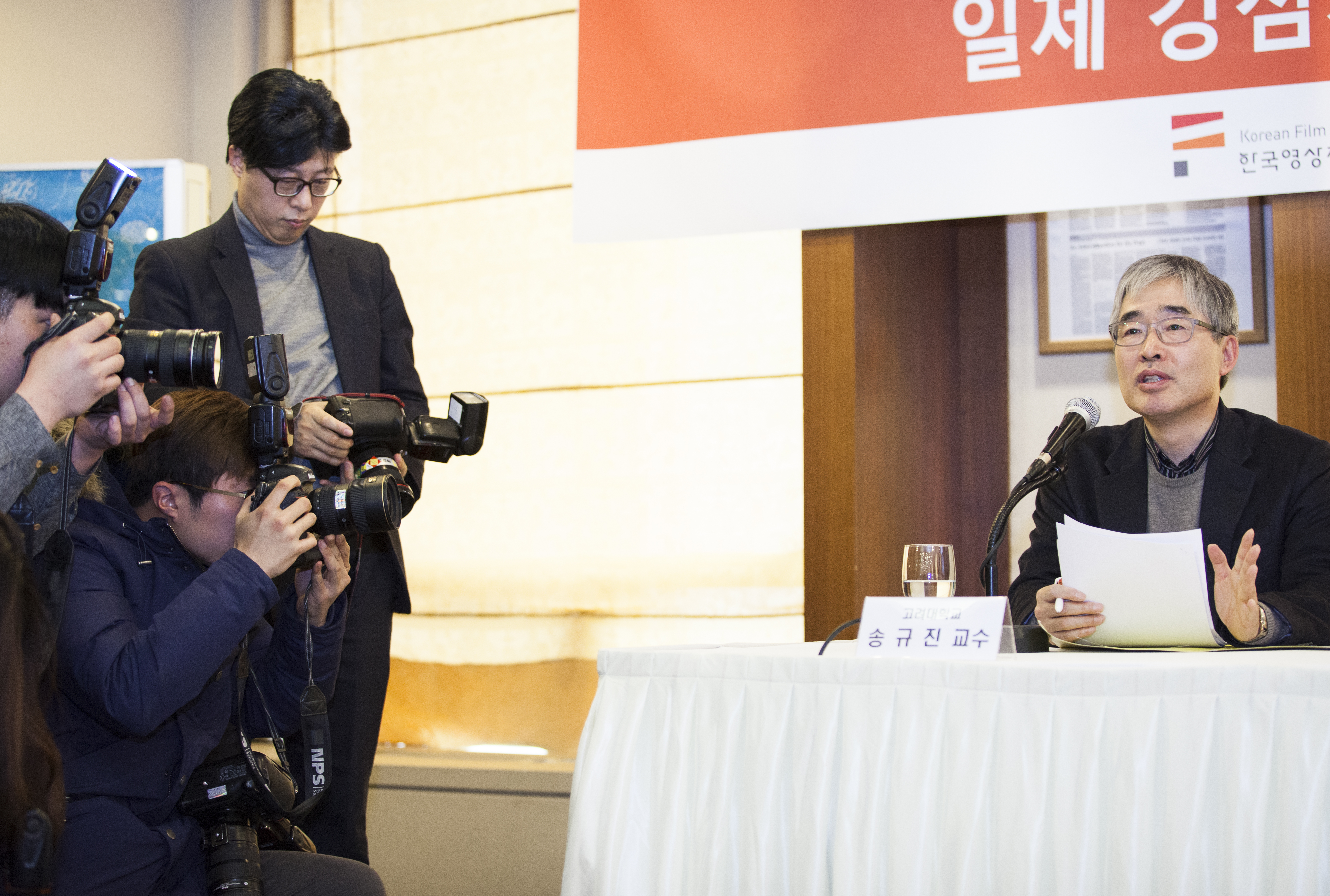ARI in the Media
ARI Professor Kue-Jin Song’s Press Conference on Imperial Japan’s Sheep Policy
2016.03.09 6047
ARI’s HK Professor Kue-Jin Song had a press conference regarding the video footage “Words from a Northern Sheep.” The contents of the event are as follows:
After its plan to increase rice production failed, the Imperial Japan introduced the ‘Cotton in the South, Sheep in the North’ policy as an alternative measure for exploitation in the Korean peninsula. To elaborate, Japan wanted to turn the peninsula into an industrial raw material supply base, taking advantage of low labor costs in Korea. Therefore, it forced the southern half of the peninsula into cotton plantation, the other half to sheep farming. Although there has been some extant research about the policy itself, there was scant attention to the process of this policy’s implementation.
The video footage was narrated from a sheep’s perspective. It introduced itself, emphasized that the northern region was a suitable habitat for sheep, and expressed allegiance to Japan. This video was produced to promote the easy understanding of the policy to adults and children. Still, this video has much value because it specifically shows the process of importing and breeding the sheep.
First, it explains how Australian sheep were imported into the peninsula. Since it filmed the transportation process sequentially in detail, it exposes its main maritime trade routes used in trading with the southern regions of the world. It was interesting to see that some sheep were quarantined and treated after falling ill and others even gave birth.
Noteworthy is the fact that Unggi, now Seonbong, was where imported sheep were unloaded. Back then, Unggi was one of the 3 major ports in the North Korean region, along Cheongjin and Najin. Through this video, it was verified that the unloaded sheep were transported via railroad. It was known that Japan used the North Korean Railroad and the Cheondo Line to transport goods to Manchukuo, today part of China.
Ultimately, this video shows the scene in which the sheep arrived and were bred in a farm run by the Oriental Development Company in Gyeongwon. The Oriental Development Company was one of the main institutions Japan used for exploitation. From this perspective, we expect this video record to stimulate new research into this field.

http://news.sbs.co.kr/news/





